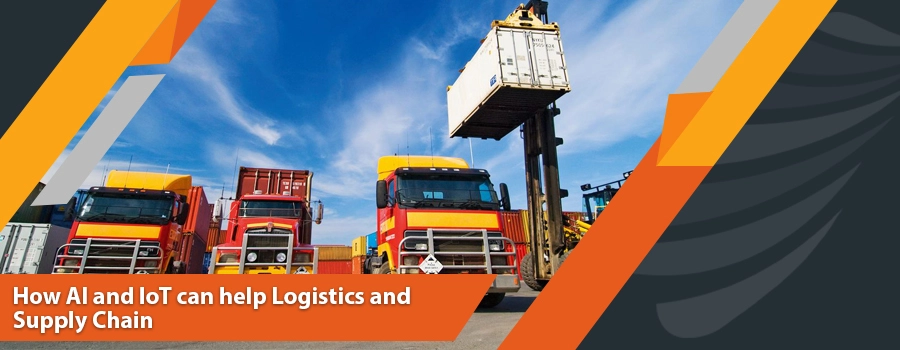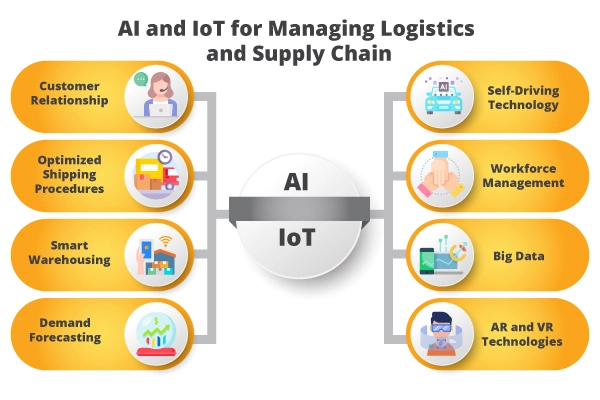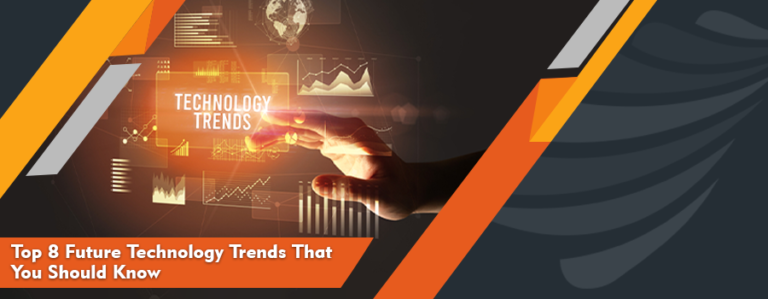In the latest decade, the processes or even the whole supply chain and logistics industry have been revolutionized with the help of advanced technology. The driving force behind such innovations is Artificial Intelligence (AI), Machine Learning (ML), and the Internet of Things (IoT). Furthermore, algorithms gain more power with agile decision-making, for instance, predictive analysis and cloud computing.
The data collected and analyzed by transportation and warehousing systems in supply chain and logistics can be used to balance the supply and demand curve and optimize the goods delivery. The fusion of AI and IoT in the supply chain enables the companies to make data-driven decisions, scale business strategies, enhance supply chain management productivity, optimize supply chain planning, and track the supply chain operations in real-time.
The most recent research reveals that 36% of organizations all around the globe have successfully integrated AI and IoT in automating their supply chain and logistics processes. 53% of those companies experienced financial growth, and 61% of the companies reported a reduction in operational expenses.
The growth and combined efforts of AI and IoT have significantly changed many supply chain and logistics sectors and have helped companies cater to new challenges. Here are a few capabilities of AI and IoT that you can evaluate to know how they fit into the company’s operations.
AI and IoT for Managing Logistics and Supply Chain
1. Customer Relationship
Managing customer relationships is challenging in the supply chain and logistics industry. However, with the help of technologies like AI and IoT, companies can integrate virtual assistants who may help the customers or the visitors to their desired products as per their searches. In the B2B marketplace, chatbots can be used for all kinds of transactions to manage buyers’ expectations and identify procurement requests. With such solutions, a business can ultimately eliminate the need for a customer service executive and reduce the consumer response time.
For instance, with the help of the voice-based service, customers can get a real-time update about their order. In this way, customers will know about the delivery’s progress without interruption and might be aware of the possible delays beforehand. This significantly helps the supply chain and logistic companies build a viable customer relationship.
2. Optimized Shipping Procedures
The predictive analysis aspect of AI and data collection capabilities of IoT sensors can provide details regarding personnel availability, warehousing, fleet availability, and customer orders. In this way, supply chain managers and logistic companies can optimize and plan the routes accordingly while considering the delay factors such as climate conditions and traffic. By optimizing the routes as per the given data, companies can save nearly 10 million gallons of fuel annually. Additionally, AI can also analyze the data gathered from the sensors and provide useful insight regarding credit reports, delivery performance, audits, vehicle usage, and evaluations to make future decisions.
3. Smart Warehousing
AI and IoT hold the potential to completely revolutionize the inventory processes and warehousing operations, which can enhance the overall productivity of the company. The biggest technological trend in the supply chain and logistic companies nowadays is robotics. IoT and AI-enabled robots in the warehouse can easily move and locate the inventory in the warehouse, sort packages, and track items. This reduces the human effort and chances of error at work, increasing overall productivity as the AI guides the robotic actions. Additionally, AI can predict the number and type of items that will stay in the warehouse longer or which items will leave soon. Smart warehousing makes the work easier by reducing manual work.
4. Demand Forecasting
Many companies benefit from using AI and IoT in combination to improve the supply chain and logistics procedures. For instance, by checking the information regarding the traffic and weather conditions, managers can easily optimize routes for the fleets to ensure timely delivery. Also, managers can analyze the demand in certain areas and direct the fleet toward the locations where the demand for certain products is high, which can lead to significantly lower operational costs. The data collected from the IoT sensors in the supply chain can guide the managers about the demand forecast and the flow of products from one place to another. This helps the managers prepare themselves for an increase in demand beforehand to avoid risks of future losses.
5. Self-Driving Technology
Driverless technology uses AI and IoT to provide a lot of obvious benefits. This technology is becoming increasingly popular these days. It is not limited to mainstream transportation but is also useful for managing the fleet operations in supply chain and logistic companies. Such vehicles can work around the clock and reduce human error to a greater extent.
This technology is solving many problems, and it is less likely to become obsolete in the future, and it is also expected that by 2030, the market for autonomous ships will reach $165 billion. Autonomous vehicles in the supply chain can impact the delivery process by reducing delays and costs and significantly impacting the production and distribution centers. Additionally, long-distance travel and no drivers in supply chain and logistics are under consideration, requiring less need for humans to navigate between destinations. This will significantly reduce time and cost and require less human effort.
6. Workforce Management
AI has been used in the supply chain and logistics industry to monitor the employees’ day-to-day performance, train them to use new technologies/ tools, recruit, and ensure that the employees are assigned the tasks best suited for them. Technology is helping in managing the workforce effectively.
Another aspect of using AI and IoT for the supply chain workforce is that it can monitor the environmental conditions and alert the managers for necessary adjustments in the working environment or equipment maintenance, which can prevent workplace injuries and equipment failure to a greater extent.
7. Big Data
With the help of the data collected through bar codes, GPS devices, and RFID tags, supply chain and logistic companies can track their fleets in real-time. The system can capture real-time fleet data, on-road network, and traffic data. By analyzing the collected data, the system can predict the weather conditions and possible accidents or track the fleet and shipment from anywhere. For instance, with TrackPro, supply chain managers can keep track of their important assets anytime and anywhere in the world.
In the logistics and supply chain industry, big data plays an important role as it enables the warehouse managers to understand the consumer behavior along with evaluate their expectations, which they often have for supply chain managers and manufacturers. Getting detailed insight into delivering, loading, and unloading has now become possible with AI and IoT. As a result, managers can optimize routes, increase security, and reduce overall operational expenses.
8. AR and VR Technologies
Visual evaluation powered by AI offers to arrange palletized mail, parcels, and shipments by capturing the photo of the cargo with the help of specialized adaptive cameras and intelligent robotic sorting. Additionally, visualization technologies are also helping the consumers in making deliberate buying decisions. This allows the retailers to efficiently and correctly stock the shelves and monitors consumer behavior and demand to identify trends.
Usually, AR markers are placed on the packages and containers. Companies can use these markers to identify the merchandise of the package until they arrive at the destination. Some supply chain and logistics companies also utilize AR in picking and delivering processes and giving the workers invaluable insight into the most efficient route to the product location.
To Sum Up
Supply chain and logistics have a strong position on the agenda of the technology providers as the industry is serving as the backbone of the economic world. AI and IoT play an important role in revolutionizing the supply chain and logistic industry and helping it retain its position in the competitive business landscape. The industry needs to consider technologically advanced omnichannel solutions to satisfy the dynamic and personalized delivery options.





